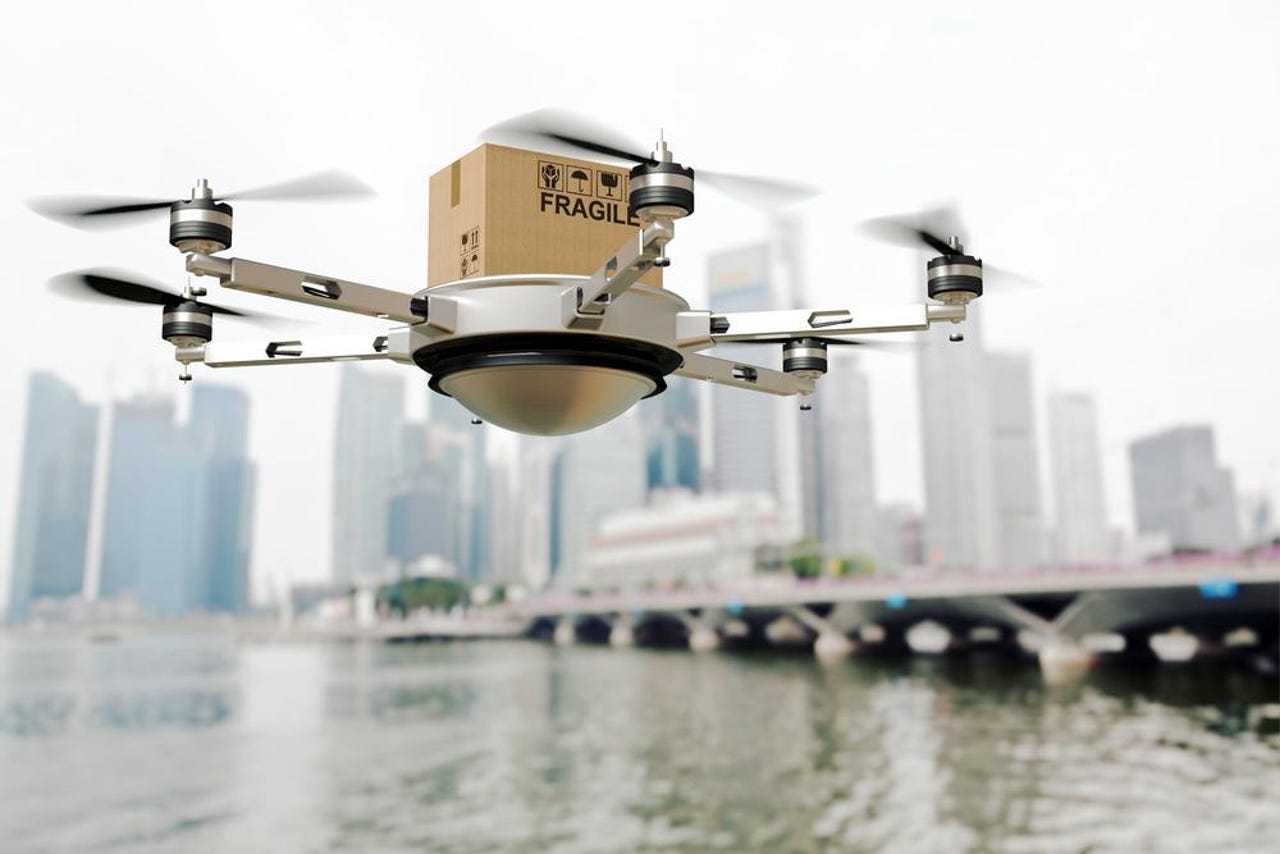Autonomous high flying drones learn to navigate by watching traffic below


In countries where commercial drone delivery is permitted beyond line-of-sight (hint: not the US), autonomous drones still have a big blind spot: Urban areas.
Due to interference from tall buildings, navigating city streets is all but impossible with GPS alone. Researchers at the University of Zurich and the National Centre of Competence in Research (NCCR Robotics) set out to tackle that problem.
Their solution? Design an algorithm that allows drones to autonomously navigate by mimicking the very traffic that delivery drones were invented to avoid.
The algorithm, called DroNet, uses input images captured with a drone's cameras.
"DroNet recognizes static and dynamic obstacles and can slow down to avoid crashing into them," explains Davide Scaramuzza, professor of Robotics and Perception at the University of Zurich. "With this algorithm we have taken a step forward towards integrating autonomously navigating drones into our everyday life."
The use of cameras instead of higher-cost sensors was intentional, a way of ensuring that the algorithm can be used on a wide variety of platforms in production today. The smarts of the system come from the powerful artificial intelligence algorithm, which uses deep learning to interpret images and direct drones to react.
"This is a computer algorithm that learns to solve complex tasks from a set of 'training examples' that show the drone how to do certain things and cope with some difficult situations, much like children learn from their parents or teachers," says Scaramuzza.
The best way for drones to learn navigation tips, it turns out, is by watching traffic. Scaramuzza and his team collected data from cars and bicycles driving in urban environments. By imitating them, their test drone learned to respect safety rules.
Unexpectedly, the researchers found that their test drone applied its new navigational savvy away from the road, as well. When they brought their DroNet-powered flier into parking garages and office buildings, for example, the drone applied the same safety consciousness it learned on the road.
The research is certainly promising, pointing to a future not-too-far off when drones will be buzzing safely down Main Street.
As a longtime resident of both Boston and Los Angeles, I can only hope the researchers used better models than either city can provide for what constitutes safe driving.